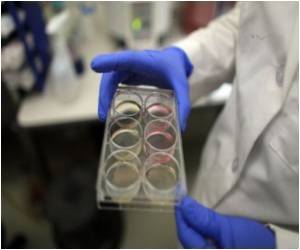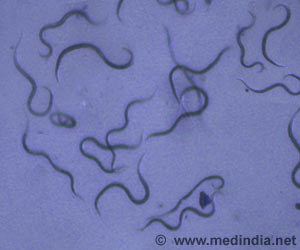In sepsis, scientists at the Center for Translational Medicine at the Temple University School of Medicine are inching closer to solving a long-standing mystery.

The findings, reported online January 25, 2013 in the Journal of Clinical Investigation, provide new insights into molecular details underlying sepsis and its effects on the lungs. In identifying STIM1 as a potential drug target, the results may lead to new treatment strategies against sepsis.
"While antibiotics are improving, more than 25 percent of those who develop sepsis will die from it. This is partly because we don't fully understand the mechanisms behind the widespread inflammation it causes," said senior author Muniswamy Madesh, PhD, Assistant Professor of Biochemistry at Temple University School of Medicine and a member of Temple's Center for Translational Medicine. "We've provided evidence indicating that without STIM1 driving calcium signaling, the exacerbation of inflammation can't occur. Our results could lead to a whole range of new therapeutic research directions."
STIM1 plays a variety of roles in the cells, including serving as a sensor for the amount of calcium inside a cell, and driving calcium signaling, which is important for cellular communication. In sepsis, a bacterial infection produces toxins that cause the body's normal reaction to infection to go haywire, prompting the immune system to attack the body's own organs and tissues.
According to Dr. Madesh, these toxins – small molecules called lipopolysaccharides – set off a chain of events. They initially bind to endothelial cell receptors, sending chemical signals that can result in "oxidative" damage to cells. STIM proteins can detect this cell damage, and drive the flow of calcium ions into the cell, increasing calcium signaling. The resulting fluctuations in calcium levels activate endothelial cells.
"When the endothelial cells are activated, they express various pro-inflammatory molecules, which facilitate white blood cells to adhere to endothelial cells and migrate from the blood to lung tissue," Dr. Madesh explained. "This cell migration further stimulates the immune system, increasing the release of other signaling molecules and factors. But how this occurs hasn't been completely understood."
Advertisement
To find out, the researchers created mice lacking STIM1 in endothelial cells, and in a series of experiments, compared these mice to normal mice exposed to the sepsis toxin. They found that without STIM1 in the cells, the calcium fluctuations did not occur, and endothelial cells were protected against the toxin-induced lung injury.
Advertisement
"Although this STIM-mediated signaling pathway is essential for development and other functions, in the case of vascular inflammation, blocking the pathway protected that animal from the damage involved. While several other pathways have been established in the sepsis model, our finding is a new signaling pathway that could be targeted for therapeutic interventions."
Because BTP2 targets a specific calcium channel rather than the protein itself, Dr. Madesh said that one of his team's next goals is to "design new molecules that target the activation of the STIM protein." This same strategy could be used for other diseases or conditions, including stroke, that involve STIM-controlled calcium signaling, he noted.
Source-Eurekalert









